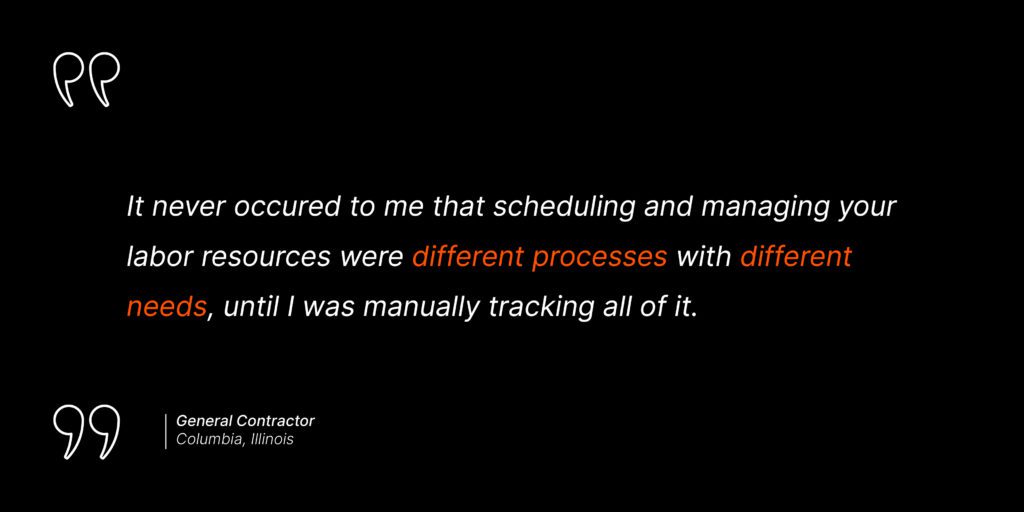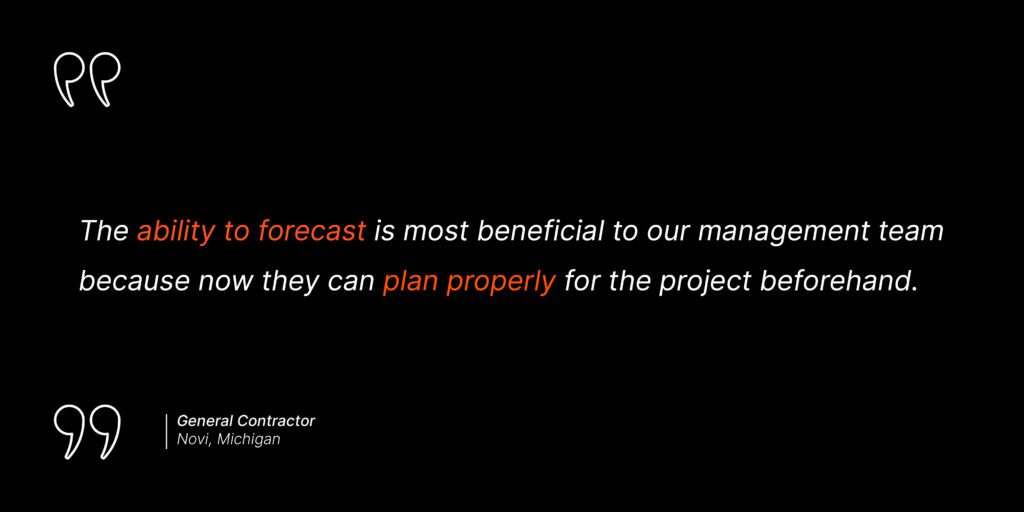It’s an uphill battle: Figuring out what field resources you have available, what projects to put them on and how they will get there on time. Most contractors have an inefficient spreadsheet, whiteboard or paper-based solution, handling their most important asset in a fallible way. Instead of using their valuable time improving business practices, construction leadership often spends hours scheduling meetings, making endless phone calls and trying to make sense of confusing documents. This has led to a major gap in construction — a workforce management gap.
“The Way It’s Always Been Done”
Every contractor is practicing workforce management. However, most are doing so unknowingly and unequipped. This equates to processes that are fragmented, unstandardized, redundant and high risk. Imagine running your business without an ERP, your projects without a project manager, or financials without an accounting department. It creates chaos — and that’s exactly how most contractors are handling workforce management today simply because “it’s the way it’s always been done.”
Redundant and inaccurate workforce information can increase project costs and make work inconsistent every week. With no way to look ahead or behind, contractors have to live day-to-day, unable to optimize past or present data to inform future projects. With all this headache, current labor scheduling and management solutions just aren’t cutting it anymore.
What’s missing? A better workforce management solution.

What is Construction Workforce Management?
Workforce management (WFM) is an organizational approach used to optimize efficiency and effectiveness of employees. When each of your workers are accounted for and utilized appropriately, you’re able to get a better grasp of who makes up your organization and what they’re good at.
Specific to the industry, construction WFM means getting the right people in the right place at the right time, which in turn, creates the right plan. Without proper WFM, you’re up against a guessing game to locate a skilled worker with the correct qualifications for a certain project at the appointed time.
Construction WFM is commonly a fragmented process. Unlike estimating or accounting practices, most contractors do not utilize the proper technology to manage their workforce. However, with the right digital solution, those endless scheduling meetings and cumbersome documents can be replaced with digitized data housed in cloud-based software.

WFM: More Than Labor Scheduling
Properly utilized, WFM means managing your roster beyond a schedule. It can also help you manage your people and data to make better decisions about how to assign your labor. Forecasting and increased communication means your current workforce will benefit from knowing exactly when and where they need to be.
Leave a Reply